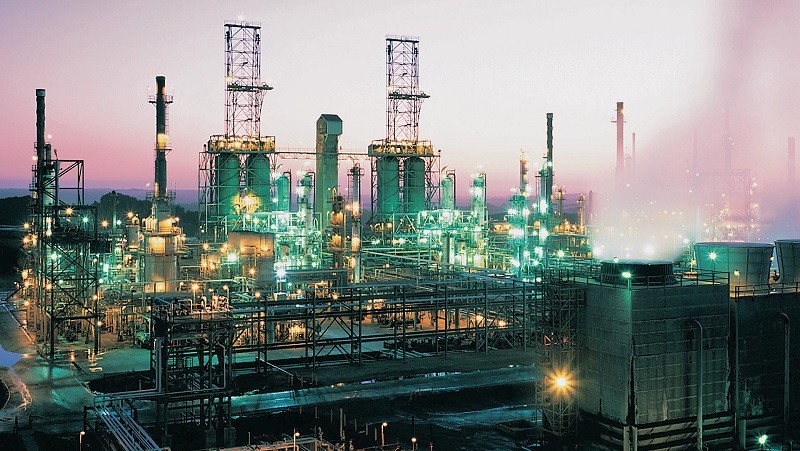 U.S. President Donald Trump’s trade tariffs on Canadian and Mexican oil imports will offer European and Asian refineries a competitive advantage against their U.S. rivals, analysts and market participants told Reuters.
U.S. President Donald Trump’s trade tariffs on Canadian and Mexican oil imports will offer European and Asian refineries a competitive advantage against their U.S. rivals, analysts and market participants told Reuters.
Trump on Saturday ordered 25% tariffs on Canadian and Mexican imports and 10% on goods from China starting on Tuesday to address a national emergency over fentanyl and illegal aliens entering the U.S., White House officials said. Energy products from Canada will have only a 10% duty, but Mexican energy imports will be charged the full 25%, they said.
The tariffs on the two biggest sources of U.S. crude imports will raise costs for the heavier crude grades U.S. refineries need for optimum production, industry sources said, cutting their profitability and potentially forcing production cuts.
That provides refiners in other markets an opportunity to make up the difference. The U.S. is currently an exporter of diesel and importer of gasoline.
“Less U.S. diesel exports would support European margins, while more export opportunities may remain in the strongly pressured gasoline market,” consultancy Vortexa’s chief economist David Wech said.
“So overall a positive for European refiners, but likely not for European consumers,” he added.
“European margins may improve because the U.S. Northeast will have to import more gasoline,” an executive at a brokerage said. “I think European and Asian refiners are the big winners.”
Tariffs would also likely force impacted crude sellers to discount prices to find buyers, said Matias Togni, founder of analytics firm Next Barrel. Asian refiners are well poised to soak up that discounted Mexican and Canadian crude, something that could also buoy their profit margins, he said.
Asian refiners could get the competitive advantage because they have the equipment to run heavy crudes and are also in the midst of raising their run rates, said Randy Hurburun, head of refining at Energy Aspects.
The Trans Mountain pipeline expansion (TMX) in Canada, which launched last May, means the pipeline can now ship an extra 590,000 barrels per day to the Canadian Pacific Coast.
Higher TMX shipments to China could substitute imports from Venezuela and Saudi Arabia, trading sources said.
Asia-Pacific refiners could also exploit fuel arbitrage opportunities to the U.S. West Coast, which might be hit by higher feedstock costs incurred from sourcing crude from further afield, Vortexa’s Wech added.
To be sure, there are expectations Midwest refiners will continue to buy Canadian crude, even with the tariff, and could simply pass the costs on to their customers at the pump.
“Folks in the Midwest could look forward to spending an extra 20 or 25 cents a gallon,” said Stewart Glickman, Equity research analyst at CFRA Research.
US FEEDSTOCK CONUNDRUM
Canadian and Mexican crude accounted for around 28% of U.S. refiners’ crude diet in 2023, Energy Information Administration data (EIA) showed, with inland refineries in the Midwest especially reliant on Canadian barrels.
U.S. refiners’ ability to run more abundant supply of light WTI crude in place of Canadian and Mexican oil will be limited because of their different qualities, analysts said.
“More use of WTI in domestic refiners is probably limited in scope, they really need the residual fuels,” Sparta Commodities analyst Neil Crosby said.
Although some U.S. refineries have completed upgrades to process more light crudes, this would lead to an underloading of secondary units, weighing on both economics and efficiency, said Energy Aspects’ Hurburun.
“When you put friction in the system, and particularly around crude optimization for a refiner, you’re likely to come up with higher costs as a result,” Deloitte’s global sector leader for oil, gas and chemicals, John England said.
U.S. imports of Canadian crude hit their highest on record in the week to Jan. 3, according to the EIA, a potential sign of refiners stocking up with tariffs looming. Imports have slipped slightly since, last at 3.72 million bpd in the week to Jan. 24, but remain elevated on the year according to the EIA.
Meanwhile, U.S. refiners have already seen earnings slide from record levels in 2022. Oil major Chevron, for example, reported fourth-quarter earnings below Wall Street estimates, after weak margins dragged its refining business into a loss for the first time since 2020.
Tariffs and subsequently higher prices could further impinge on U.S. refiners’ ability to turn a solid profit.
“The mechanics of putting tariffs on Mexico and Canada are very tricky for competitiveness of the U.S. system,” Sparta’s Crosby added.
(Reporting by Robert Harvey in London, Georgina McCartney in Houston, Shariq Khan, Nicole Jao and Jarrett Renshaw in New York, and Trixie Yap in Singapore, Editing by Alex Lawler and Nia Williams)